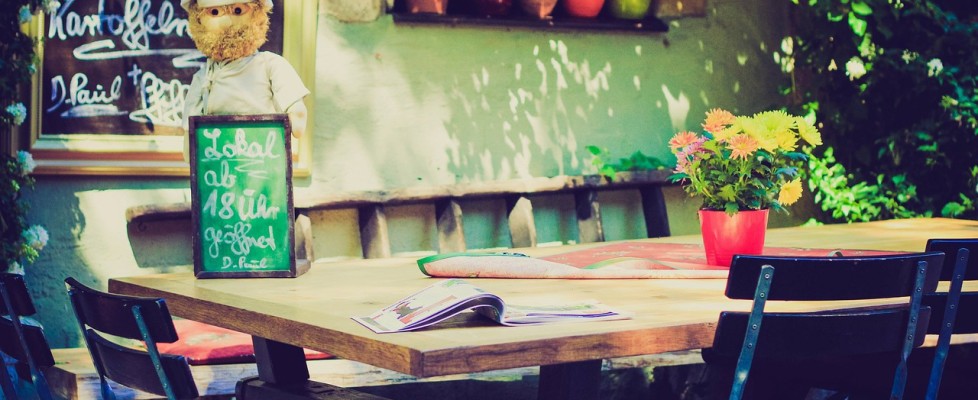When You Sit Down To Dinner, How Many People Are At Your Table?
This might sound like a pretty easy question to answer, but think about it for a second. When you sit down to dinner, how many people are at your table with you?
Now the obvious way to answer this question is to just look around the next time you dine and count. For most of us the answer would be anywhere from zero to probably four or five dining partners. While answering this question in this way will help you with your meal planning, it’s not the answer I am looking for.
See, when I sit down to dinner there are 7,365,486,000 people at my table (and counting!).
That’s the current world’s population as of writing this post. (You can check how much it’s gone up since I wrote this post here).
That’s a pretty big table, and let me tell you, conversation gets pretty loud, and confusing with so many languages. But we’re all here eating from the same table.
What’s On The Menu
Picking what to serve can be a bit of a conundrum, because we all eat very differently, and some more sustainably than others.
It’s not like picking a menu for your family, where you only have to worry about the taste preferences of a few, and the market availability of the ingredients in your particular area.
When you have 7,365,486,000 dinner guests you have to worry about the availability of the ingredients worldwide! Will there be enough for everyone?
When you sit down to eat, are you worrying about how to feed yourself and your family, or are you worrying about how to feed all of humanity?
While I admittedly am not thinking about that at every single meal I partake in, it is a topic that does inform my dietary choices. And when I consider the question one thing stands out above all the rest: not everyone at my table can eat like I can.
Not every single one of the 7,365,485,999 people at my table can have a Big Mac, an order of fries and a large Coke. Not all of them can have ice cream for dessert. Many of them will miss out on the potato chips and beef jerky we have for in between meal snacks.
A Sustainable Menu
If I choose a meat and dairy heavy meal, a lot of the people at my table will go hungry. See the chef can’t prepare 7,365,486,000 servings of meat and dairy based entrees.
When I plan a meal for 7,365,486,000 people, a lot goes out the window. It can’t be meat at every meal or even most meals — there’s just not enough for all of us to have it at every meal. It can’t be processed junk foods (the distribution channels alone are unsustainable, let alone all the petroleum-based packaging, food additives, fats and sugars and salts, etc).
For the most part I need to serve pretty basic meals comprised of whole plant foods.
And wouldn’t you know, that’s how most of my guests are used to eating! Billions of my compatriots from China, India, Central and South America, and Africa are used to eating meals comprised of mostly plants!
They love things like starchy rice, beans, vegetables, potatoes and sweet potatoes, corn, lentils, wheat, oats, and fruits. Most of the world already eats this way for one simple reason: it is cheaper.
It is wayyyy cheaper to live on beans and rice than it is to live on brats and ricotta. Bulgar is cheaper than burgers. Chickpeas are budget-friendly while chicken and cheese break the bank for many.
Why is this?
Why is it cheaper to buy whole plant foods than it is to buy animal products?
Because price is a reflection of how much it cost to produce an item. And the cost to produce an item relates to how much energy it took. So when we consider the fact that beefsteak tomatoes are cheaper than ground beef, we realize that it’s because tomatoes are more sustainable than cattle meat!
We in the Western world have the privilege of not worrying too much about where our next meal is coming from. And with that privilege we have a responsibility to consider not just how we are going to feed ourselves, but how we will feed the world.
We need a more sustainable food system (animal agriculture accounts for a whopping 51% of all greenhouse gas emissions worldwide!), and that can only happen when we switch to a more plant-based diet.
Consider your 7,365,486,000 table mates the next time you sit down to eat and ask yourself if your entree choice will really be able to be fed to each and every one of them, or if some of them will go hungry.
In our truly global connected modern world, the fate of those halfway around the planet is intricately tied to your own. Global warming doesn’t just affect one half of the planet. The Amazon being deforested for cattle feed doesn’t just impact Brazilians. It impacts your livelihood. It impacts your survival. Eat for 7 Billion, not for one.
Please Subscribe To My YouTube Channel!
Sign Up For Personalized Health Coaching

